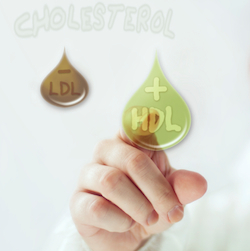Aging
Integrating Diet and Physical Activity in Type-2 Diabetes Therapy to Reduce Inflammation
Dark Chocolate Improves Walking in Patients With Peripheral Artery Disease
This interventional study measured the acute effect of dark chocolate on walking distance autonomy (WDA), artery dilatation and NOX2‐mediated oxidative stress in a population affected by moderate‐severe. Previous studies with antioxidant infusion provided evidence that oxidative stress is implicated in impairing WDA, while its inhibition was associated with maximal walking distance (MWD) improvement. In PAD patients dark but not milk chocolate acutely improved walking autonomy with a mechanism possibly related to an oxidative stress‐mediated mechanism involving NOX2 regulation.
Compelling Research on Vitamin D Supplementation for Blood Pressure Reduction
New genetic research provides compelling evidence that low levels of vitamin D have a causal role in the development of high blood pressure (hypertension). The findings, published in The Lancet Diabetes & Endocrinology (June 26, 2014), suggest that vitamin D supplementation could be effective in combating some cases of hypertension. “In view of the costs and side effects associated with antihypertensive drugs, the potential to prevent or reduce blood pressure and therefore the risk of hypertension with vitamin D is very attractive”, said study leader Professor Elina Hyppönen from the University of South Australia.
Drop Diastolic & Systolic Blood Pressure with Yoga
Lifestyle modification is a cornerstone of hypertension (HPT) treatment, yet most recommendations currently focus on diet and exercise and do not consider stress reduction strategies. Yoga is a spiritual path that may reduce blood pressure (BP) through reducing stress, increasing parasympathetic activation, and altering baroreceptor sensitivity; however, despite reviews on yoga and cardiovascular disease, diabetes, metabolic syndrome, and anxiety that suggest yoga may reduce BP, no comprehensive review has yet focused on yoga and HPT. By Anupama Tyagi, MA, PhD(c) and Marc Cohen MBBS(Hons), PhD, BMedSc(Hons), FAMAC, FICAE, published Alternative Therapies in Health Medicine, Vol. 20, No. 10.
Are Today’s Adolescents Tomorrow’s Hip-Fracture Patients?
The seeds of the pernicious disease osteoporosis are sown during adolescence, when the skeleton is most active in absorbing dietary calcium and building up nearly all the bone mass that will carry the teenager throughout life. Along with calcium, both vitamin D and vitamin K (particularly vitamin K2) are essential for bone formation. Little research has been done to evaluate adolescents’ vitamin K requirements for optimal bone development, but recent papers indicate that vitamin K status plays an important role in children’s bone health, and that bone metabolism requires significantly more vitamin K than blood coagulation. Calcium and vitamin D intake is well understood in the medical community, though fewer physicians are aware of the importance of vitamin K2, and little has changed with respect to dietary intake. By Karan Baucom, MD; Lara Pizzorno, MA; and Joseph Pizzorno, ND, published in the J of Restorative Medicine, Osteoporosis: The Need for Prevention and Treatment.
Glutathione: Physiological and Clinical Relevance
As the risk of exposure to persistent organic pollutants (POPs) grows, research is looking at the role of glutathione and modulating disease risk. Joe Pizzorno ND and Joseph Katizinger ND review glutathione (GSH) and how altered GSH status has been implicated in a number of chronic, acute, and age-related diseases, as well as the aging process itself. In this review, the authors briefly describe glutathione physiology and the clinical implications of altered GSH homeostasis, as well as research on the use of various forms of glutathione as a therapeutic strategy. By Joe Pizzorno ND and Joseph Katzinger, ND, published in J of Restorative Medicine, Vol. 1, No. 1
Osteoarthritis Research Review
In May 2013, Harvard Medical School published a report on osteoarthritis in their Women’s Health Watch. In the report, they looked at “on-the-horizon therapies” that could change the way you treat the disease. In the report, Dr. Anonios Aliprantis made statement that should have made doctor’s rethink the way they treat OA. “We’re beginning to understand that osteoarthritis is a disease of the entire joint,” said Aliprantis, director of the Osteoarthritis Center at Harvard-affiliated Brigham and Women’s Hospital. “Much of the research over the last 20 or 30 years has focused on cartilage as the target. But we’re beginning to realize that there are important changes happening in the bone underneath the cartilage, and in the joint lining itself. As we begin to understand osteoarthritis as a disease of the entire joint, new treatment targets will emerge.”
Autophagy: Arterial Health and Longevity
What is the age old secret to longevity? It could come down to one word, autophagy, and be as simple and complex as keeping the 60,000 miles of blood vessels in the body healthy. This report reviews an essential element to longevity, maintaining the wellness of our vascular system asRead
WHITE PAPER: Managing the Metabolic Processes of Osteoarthritis with Medical Foods
Osteoarthritis is characterized as a chronic condition, whereby cartilage tissue that cushions joints breaks down, causing stiffness, pain and loss of joint movement. It is a gradually occurring condition that is often perceived by patients as a nuisance and a normal symptom of aging, until the stiffness and pain becomeRead











